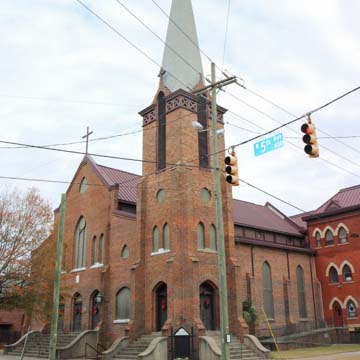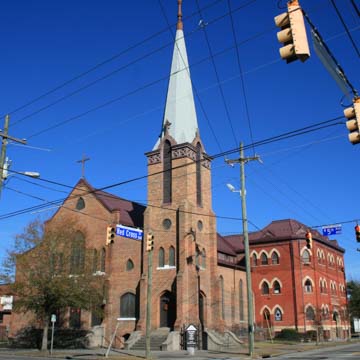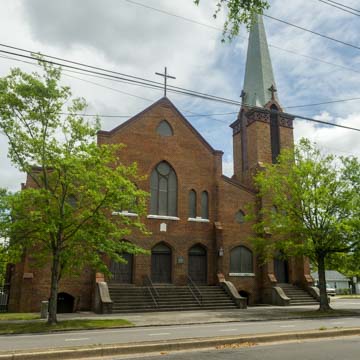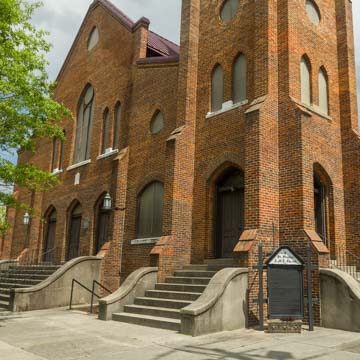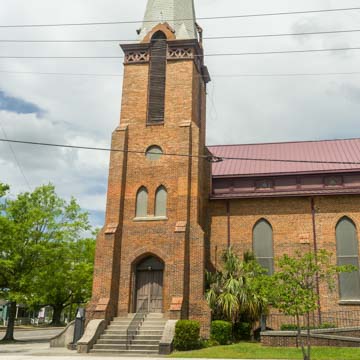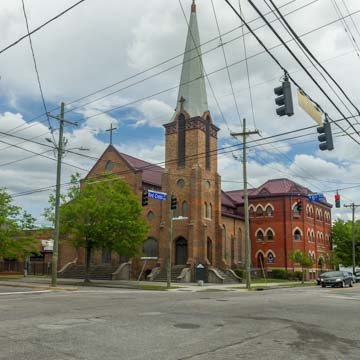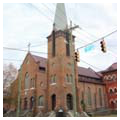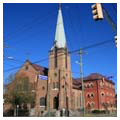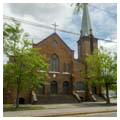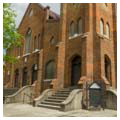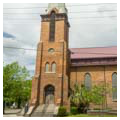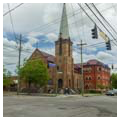St. Stephen African Methodist Episcopal (AME) Church is one of the oldest Episcopal churches in North Carolina built for a Black congregation. It traces its beginnings to the Mother Bethel AME Church in Philadelphia, which was founded in 1794 by members of the Free African Society. In 1863, during the Union Army occupation, AME churches began forming in the South, and by the end of the war, AME churches were established in several North Carolina locations: New Bern, Washington, Roanoke Island, and Charlotte.
St. Stephen’s history began in February 1865 during Union occupation of Wilmington. When a White minister assigned to the Front Street Methodist Church arrived to his congregation, he found the service already underway, led by a Union chaplain and a church member, both African Americans. The church members asserted their ownership and attempted to transfer the church to the AME but failed. In May 1865, 642 members withdrew to form a new congregation. The AME Church quickly gained popularity and by 1880 the congregation had outgrown its original wooden structure.
Church trustee Lewis Hollingsworth drew the plans for the new church, to be located on a block known as Campbell Square at the corner of Red Cross Street and North Fifth Avenue, four blocks east of Front Street in what is now the Wilmington Historic District. The square, named after William Campbell, a White businessman from Philadelphia, was deeded to the city in 1845 and set aside for the use of an African American public school, graveyard, the First Baptist Colored Church, and St. Stephen AME Church. Construction began in 1881 and by the end of the year the roof and brick walls, furnished by fellow church member Daniel Lee, were built. For the next four years, the congregation worshiped in shifts in the basement of the structure. The church was completed in 1885, although the tower was not added until two years later.
Hollingsworth’s design was a large basilica plan with simply detailed gable-end facades. The tower anchors the corner and, together with the west entrance facade, forms a powerful street presence. The buttresses mark the rhythm of the nave bays. The handsome woodwork, columns, and balconies of the large sanctuary were crafted by church members in the late Gothic Revival style. In the center, a high, vaulted ceiling draws the eye upward.
African American churches formed not only the spiritual core of their communities but also functioned as centers of education and neighborhood social life. St. Stephen AME Church became one of the largest congregations in Wilmington and provided a central site for worship, concerts, rallies, and lectures. A large annex addition, built in 1913, provided the local Black community with a combined school, small clinic, hostel, and public bath. The L-shaped annex is attached to the east end of the main church, with the short end of the L wrapping around the south (street) facade. The three-and-a-half-story red brick annex is also designed in the Gothic Revival style, with light-colored brick highlighting the tops of the arched windows, doorways, and forming a stringcourse above the raised basement.
St. Stephen AME Church continues to serve as a community anchor. In 2018, it launched an outreach program called the Neighborhood Improvement Development Association. The church is open regularly for services.
References
"An Abbreviated History of St. Stephen African Methodist Episcopal Church." St. Stephen African Methodist Episcopal Church. Accessed March 24, 2022. https://www.ststephenamecwilmnc.org/.
“A Guide to Wilmington's African American Heritage.” City of Wilmington. Accessed November 21, 2014. http://www.wilmingtonnc.gov/.
Bishir, Catherine W. North Carolina Architecture. Portable edition. Chapel Hill: University of North Carolina Press, 2005.
King, Robbie, and Sherry Wyatt, “Wilmington Historic District Boundary Expansion and Additional Documentation,” New Hanover County, North Carolina. National Register of Historic Places Registration Form, 2002. National Park Service, U.S. Department of the Interior, Washington, D.C.
Mattson, Richard, and Frances Alexander, “Grace African Methodist Episcopal Zion Church,” Mecklenburg County, North Carolina. National Register of Historic Places Registration Form, 2007. National Park Service, U.S. Department of the Interior, Washington, D.C.
“St. Stephen A.M.E. Church.” African American Heritage Foundation of Wilmington. Accessed November 15, 2014. www.aahfwilmington.org/.








